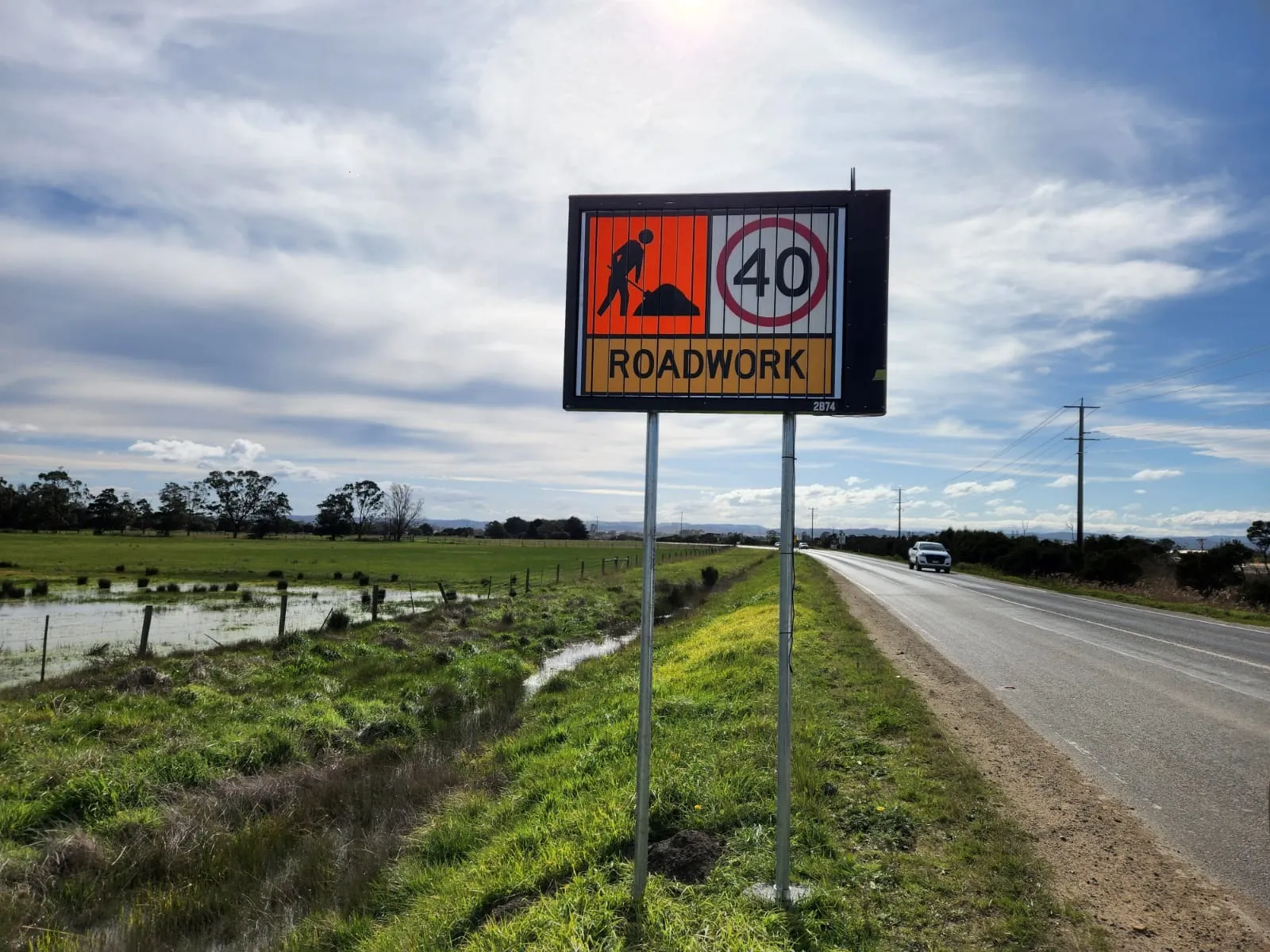
Safetek Solutions is to launch TriSign, a remote-access variable message sign designed specifically for the temporary traffic management industry.
TriSign allows sites such as workzones to shift their messaging in 30 seconds, Safetek says, with three set-ups typically available at the push of a button.
The low-power sign runs off solar and on-board battery - therefore there is no need for a hardwired power supply.
It has been designed as a direct replacement for pole-mounted temporary traffic management signage for project sites
The traffic controller interface is a native android app; site managers and supervisors have access to the web app SmartSite, which maintains all the logs of sign changes and other admin functions for the sign network.
The first prototype version of TriSign was deployed on the road for a trial for Seymour Whyte and the Queensland government in August 2021: 18 units were put on the Bruce Highway on Australia's Sunshine Coast.
Version 2 was used in a trial with the Victorian Government in Pakenham, Victoria, as part of the Australian Road Research Board (ARRB) TIPES approval stage 3 field assessment in May this year, with 22 units installed; these were replaced with version 3 signs in August, plus an additional 23 signs (45 in total) to extend the original site by 5km.
TriSign has just won the 3M-ACRS Diamond Road Safety award 2022, and ARRB and Ausroads are expected to ratify the approval decision for the product shortly.










